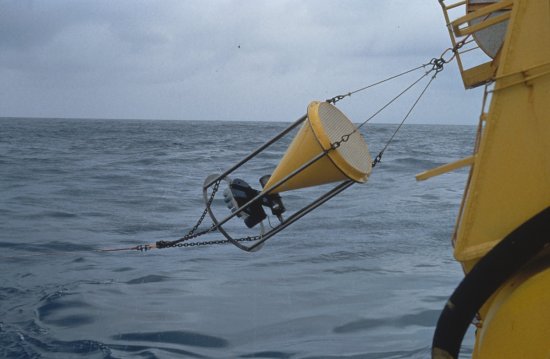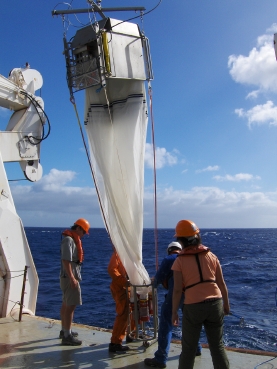
Sediments
Sediments collected from the ocean floor represent past particle flux from the surface, as well as life at the bottom of the water column. Due to superposition, the deeper in the sediment you reach, the older the material, this can stretch back hundreds of millions of years. Sediments preserve an imperfect archive of marine life which lived in our ancient oceans, but can be impacted by dissolution, bioturbation and diagenesis, and thus requiring careful study. Micro and nannofossils from these sediments are often used to reconstruct past ocean and climate conditions such as temperature, salinity, pH and productivity.

Sediment traps
Sediment traps are used to collect sinking material in the water column, including biological particles. They offer a valuable long-term perspective on biological production in the surface and export fluxes. We study their biological content using automated microscopy methods coupled to deep-learning based methods for detection and classification.

Nets, water samples
Plankton nets (collect specimens in nets of various mesh sizes over a vertical, horizontal or oblique path) and water samples collect living planktonic microorganisms and particles. These samples are first cleaned using an asher (low temperature) to remove organic matter, followed by processing with micro-automated systems to study their morphological traits and assemblages. This enables a deeper understanding of their ecological roles, interactions, and contributions to paleoclimatic studies.
Cultures
Culture studies aim to reproduce external environmental conditions in the laboratory, and can be either realistic representations of the environment or changed to represent certain past, or future conditions. Growing samples in controlled conditions is crucial for the understanding of biological behaviors, and for environmental proxy development as it allows you to isolate key variables for further research.
